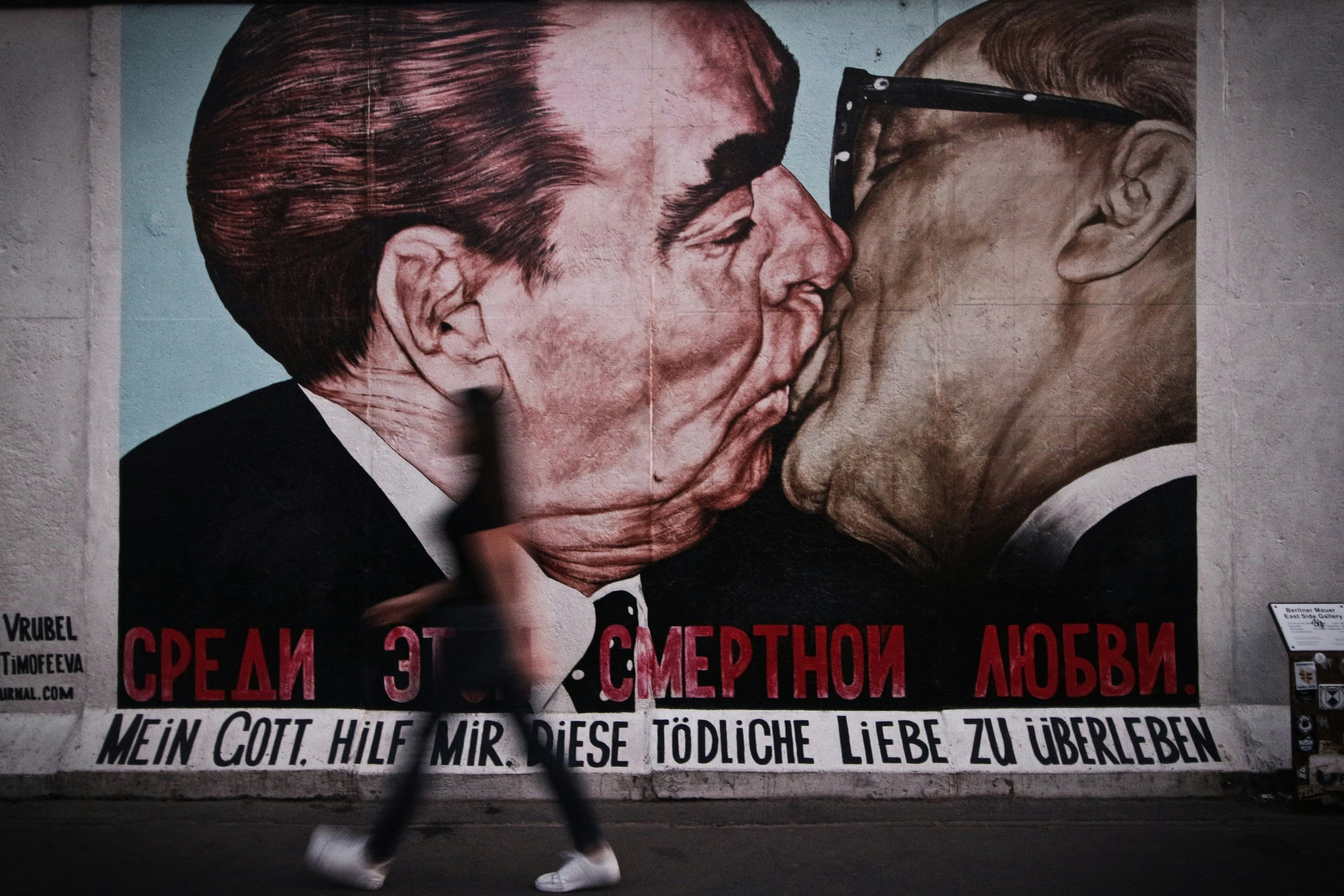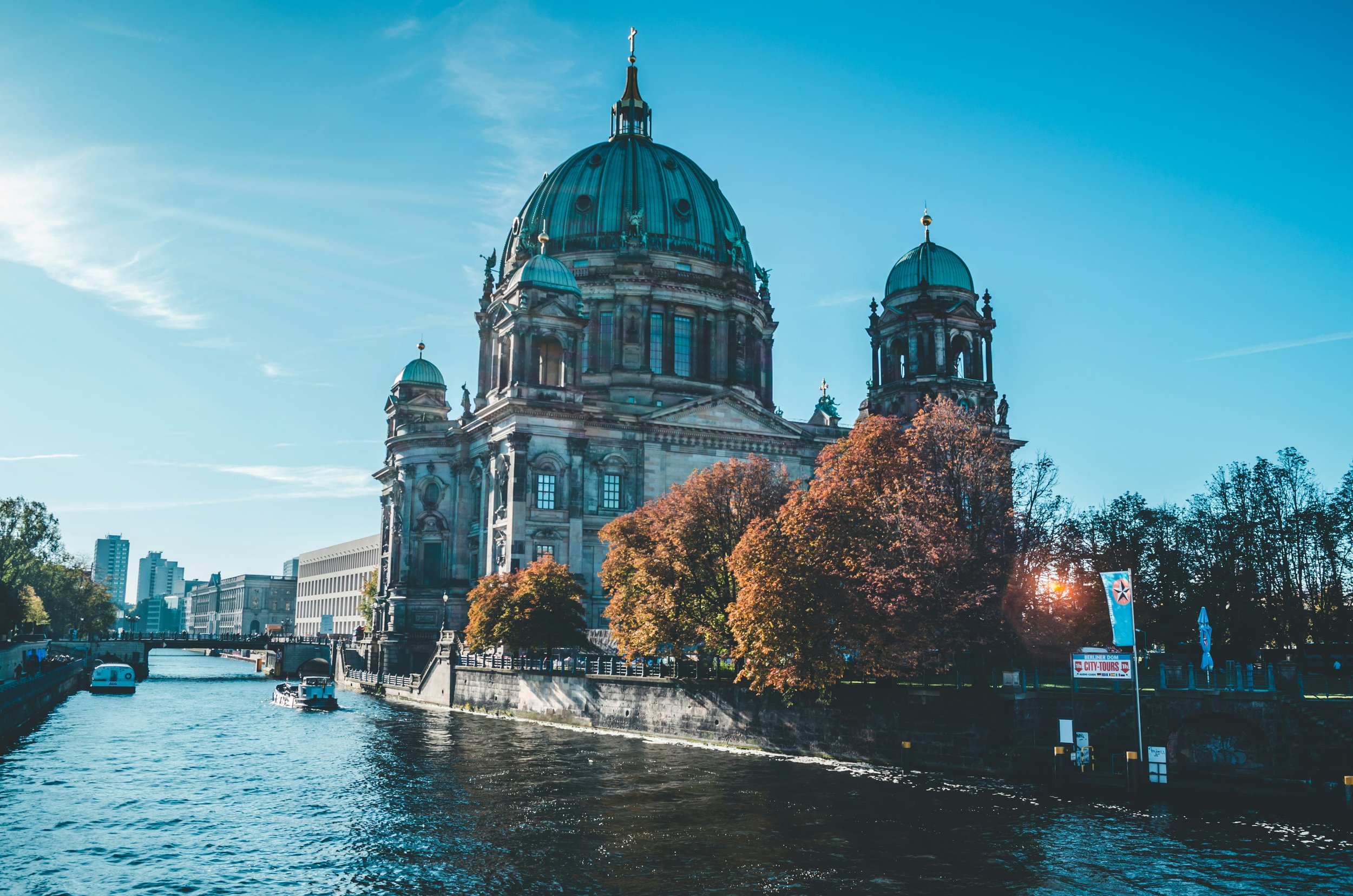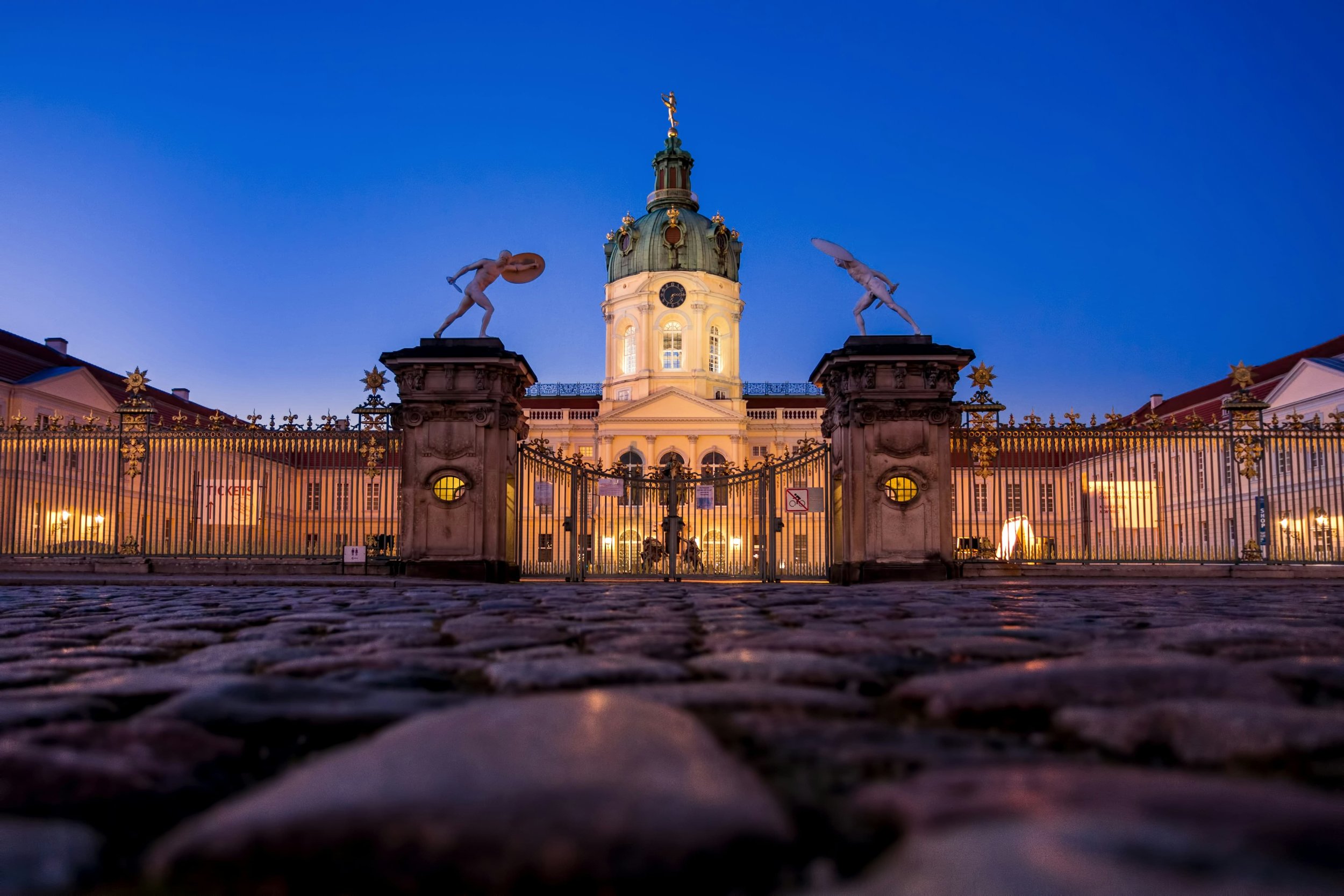The Ultimate Berlin Travel Guide for First-Time Visitors
If you're planning your first trip to Berlin, you might feel overwhelmed. From navigating the public transportation system to choosing the best neighbourhoods to explore, there's a lot of information to digest. And that's not even considering all the incredible sights, museums, restaurants, and nightlife options.
But don't worry—I'm here to help! I have been lucky enough to live in Berlin for the last nine years and have learned the secrets to making the most of your trip. Whether you're going for a long weekend or a full week, this guide will cover all the essential travel tips that first-time visitors to Berlin need to know.
From the best ways to get around the city to insider advice on where to find the most delicious food, I've got you covered. I want to help you have an unforgettable trip to one of Europe's most exciting cities.
So pack your bags and get ready for an adventure as we dive into this ultimate Berlin travel guide!
Table of Contents
Key Tips to Know Before You Go
Berlin is a sprawling city, so group your activities by location to minimize travel time
The public transportation system is extensive and easy to use once you get the hang of it
Many places prefer cash over credit cards, so always carry some euros on you
Most shops, supermarkets and some restaurants are closed on Sundays
Drinking alcohol in public is legal, and Berlin's nightlife is legendary - pace yourself!
When to Visit Berlin
The best time to visit Berlin depends on your preferences and interests. If you want to avoid the crowds and save money, consider visiting during the shoulder seasons of fall or early spring. You'll trade ideal weather for cheaper hotel rates and shorter lines at popular attractions.
Summer is peak season, especially in July and August. The weather is warm and perfect for outdoor dining and drinks. However, that means bigger crowds, higher prices, and the need to book accommodations well in advance.
If you don't mind chilly temperatures, December is a magical time to visit Berlin's famous Christmas markets. And for foodies and night owls, the long summer days provide plenty of daylight for sightseeing and plenty of darkness for partying at Berlin's iconic clubs.
Berlin's Weather by Month
Berlin experiences a temperate climate with distinct seasons, each offering a different vibe and range of activities. Here's what you can expect weather-wise each month:
January: Cold and often snowy, with average highs around 3°C (37°F) and lows of -2°C (28°F).
February: Still chilly with a chance of snow, average highs of 4°C (39°F) and lows around -2°C (28°F).
March: The start of spring brings milder weather, with highs of 9°C (48°F) and lows of 1°C (34°F).
April: Temperatures rise with highs of 15°C (59°F) and lows of 4°C (39°F), and the city starts to bloom.
May: Pleasantly warm with highs of 20°C (68°F) and lows of 9°C (48°F), perfect for outdoor activities.
June: The start of summer with longer days, highs of 22°C (72°F) and lows of 12°C (54°F).
July: The warmest month, with highs of 25°C (77°F) and lows of 14°C (57°F), ideal for festivals and open-air events.
August: Similar to July, with highs of 24°C (75°F) and lows of 14°C (57°F), and the occasional thunderstorm.
September: The beginning of fall, with highs of 19°C (66°F) and lows of 10°C (50°F), and less rainfall.
October: Cooler with colourful autumn leaves, highs of 13°C (55°F) and lows of 6°C (43°F).
November: Chilly and often overcast, with highs of 7°C (45°F) and lows of 2°C (36°F).
December: Cold with festive Christmas markets, highs of 3°C (37°F) and lows around -1°C (30°F).
Remember, these are averages, and the weather can be unpredictable, so it's always a good idea to check the forecast before your trip and pack accordingly.
Getting Around Berlin
Public Transportation
Berlin has a fantastic public transportation system called the BVG. It's an integrated network of trains, trams, buses and ferries that can get you anywhere you need to go. Key things to know:
Different types of trains: The U-Bahn are mostly underground subways, while the S-Bahn are largely above ground.
Fare zones: Berlin is divided into A, B and C zones. Most of the top attractions are in zone A. Tickets that cover zones A and B (AB tickets) are most common for visitors.
Ticket validation: You must always validate your ticket by stamping it at the station or on the bus/tram. There are no turnstiles or barriers, and inspectors can ask to see your ticket anytime.
Useful app: Download the BVG app. I use it to buy tickets. Google Maps is still the best for point-to-point directions.
Biking & Scooters
Berlin is an extremely bike-friendly city, with well-marked bike lanes on most major streets. Renting a bike is an excellent way to explore neighbourhoods and see the sights at your own pace. Rentals start around 8-12 euros per day. I love using the scooter-sharing programs. Tier and Voi are my preferred companies.
Taxis & Rideshares
Taxis and rideshares like Uber are widely available but only sometimes necessary, given the excellent public transit. Taxis can be hailed on the street, at a taxi stand, or ordered via the Free Now app. Fares start at 4 euros and cost around 2 euros per kilometre.
Where to Stay in Berlin
Berlin has many great neighbourhoods to stay in, each with its own distinct personality and advantages. If it's your first time, aim to stay within the Ringbahn - the circular S-Bahn line that bounds the city centre. Here are some of the most popular areas:
Mitte: Very central and convenient to top sights like Museum Island and the Reichstag. Mitte has many luxury and boutique hotels but limited budget options. Good for sightseeing and upscale dining/shopping.
Kreuzberg & Friedrichshain: Known for alternative vibes, street art, international cuisine, and nightlife. More affordable options are available here. Good for foodies, clubbers, and experiencing Berlin's counterculture.
Prenzlauer Berg: A family-friendly area full of cute cafes and unique shops. Has a relaxed, residential feel while still being close to the centre. Good for a low-key stay and neighborhood exploring.
Charlottenburg: Elegant area in the west with high-end shopping along Kurfürstendamm and around Savignyplatz. Home to Charlottenburg Palace. Good for a refined atmosphere and luxury hotels.
For the best deals, book well in advance - especially for summer and December. Berlin has a wide range of accommodations, from budget hostels to five-star hotels. Expect to pay at least 100 euros per night for a well-located mid-range hotel room.
Areal photo of Berlin
Berlin Welcome Card. A great way to find discounts
What to See & Do in Berlin
Top Attractions
Brandenburg Gate: The iconic monument and symbol of Berlin. Formerly part of the Berlin Wall, now represents unity.
Reichstag: Germany's parliament building topped by a glass dome with 360-degree city views. Free to visit with advance registration.
East Side Gallery: The longest preserved section of the Berlin Wall, covered in murals and street art. Runs along the Spree River.
Museum Island: A complex of five world-renowned museums, including the Pergamon. A UNESCO World Heritage site.
Checkpoint Charlie: The most famous crossing point between East and West Berlin during the Cold War. Now a tourist hotspot.
Memorial to the Murdered Jews of Europe: Also known as the Holocaust Memorial. A sombre, thought-provoking maze of concrete slabs.
Charlottenburg Palace: The largest palace in Berlin, dating to the 1600s. Lavish interiors and expansive gardens.
Tempelhof Field: A former airport turned public park, popular for picnics, kite flying, and cycling down the old runways.
Unique Experiences
Take a street art tour to learn about Berlin's famous urban art scene and see ever-changing murals.
Visit an abandoned spy station at Teufelsberg, built on top of a man-made hill constructed from WWII rubble.
Sing karaoke in Mauerpark on Sundays and browse the popular flea market.
Relax at a beach bar along the Spree River, like Holzmarkt or YAAM
Get a taste of Berlin's legendary nightlife at a club like Berghain, Watergate, or Sisyphos.
Tour a WWII bunker or Cold War nuclear fallout shelter with Berliner Unterwelten.
Rent a kayak and paddle through the city centre on the Landwehr Canal.
Eating & Drinking in Berlin
Berlin is a foodie paradise with an extremely diverse and international dining scene. You can find everything from cheap street eats to Michelin-starred restaurants here. Some iconic Berlin dishes to try:
Currywurst: Fried pork sausage topped with curry-spiced ketchup, often served with fries. Get it from a street kiosk like Konnopke's Imbiss or Curry 36.
Döner kebab: Berlin's ultimate street food. A Turkish-style sandwich of meat carved from a rotating spit stuffed into bread with veggies and sauce. The best are in Kreuzberg and Neukölln.
Berliner Pfannkuchen: A jelly-filled doughnut topped with powdered or regular sugar. Basically the official pastry of Berlin.
For a quintessential Berlin dining experience, head to a Kneipe - a cosy neighbourhood pub serving hearty German food. Or grab a bratwurst or pretzel at a Biergarten on a sunny day. Berlin also has a fantastic international food scene, with tons of great Vietnamese, Middle Eastern, Italian, and fusion restaurants.
When it comes to nightlife, Berlin is hard to beat. It's most famous for its gritty electronic music clubs, many of which are open from Friday night straight through to Monday morning. Partying is taken very seriously here. But there's something for everyone, from classy cocktail bars to punk dive bars to laid-back breweries. Some top nightlife districts include:
Kreuzberg: The heart of Berlin's counterculture, home to countless bars, cafes, and clubs. Known for punk, hip-hop, and LGBTQ+ venues. Try Fahimi Bar, Würgeengel, or SO36.
Friedrichshain: Another alternative area popular with students and artists. Check out Hops & Barley for craft beer or Berghain/Panorama Bar for the most famous club in Berlin.
Prenzlauer Berg: A bit more upscale, with wine bars and cocktail lounges amidst indie boutiques. Becketts Kopf and Wohnzimmer are popular spots.
Neukölln: An up-and-coming area in the south with lots of hidden gems. Explore the bars along Weserstrasse and Hobrechtstrasse.
Must-Try German Beers in Berlin
No visit to Berlin is complete without sampling some of Germany's world-famous beers. Here are a few local brews you shouldn't miss and the best places to try them:
Types of Berlin Beers
Berliner Weisse: A tart, low-alcohol wheat beer often mixed with fruit syrup. Enjoy one on tap at Prater Garten, Berlin's oldest beer garden.
Pilsner: For a crisp, golden pilsner, head to Brauhaus Lemke, a sprawling brewery and beer hall.
Schwarzbier: This dark lager has a light, malty flavor. Try one at Brauhaus Südstern, a cosy neighbourhood brewpub.
Kellerbier: An unfiltered lager served straight from the cask. Klosterbrauerei Neuzelle offers a great version in a historic monastery setting.
Where are Berlin's Best Breweries?
Berliner Weisse at Prater Garten: This tart, low-alcohol wheat beer is a Berlin speciality. It's often mixed with fruit syrup to balance the sourness. Enjoy one on tap at Prater Garten, Berlin's oldest beer garden, dating back to 1837.
Pilsner at Brauhaus Lemke: For a crisp, golden pilsner, head to Brauhaus Lemke, a sprawling brewery and beer hall. Their Lemke Original Pils is a classic example of the style.
Schwarzbier at Brauhaus Südstern: Schwarzbier is a dark lager with a light body and subtle malty flavour. Try one at Brauhaus Südstern, a cosy neighbourhood brewpub in Kreuzberg.
BRLO Brwhouse offers a diverse range of craft beers, including their flagship German Pale Ale, Helles, Berliner Weisse, and seasonal specials. It emphasizes quality using organic ingredients and producing beers that are vegan-friendly and sustainable.
Brauhaus Georgbräu, situated in Berlin's historical Nikolaiviertel, offers a spacious and charmingly decorated venue on the bank of the river Spree. In a quintessential Berlin setting, patrons can enjoy GEORG-Pils directly from the tap, with a choice of dark or light beers available.
Experiencing Berlin's Legendary Nightlife
Berlin's nightlife is legendary, pulsating with an energy that attracts party-goers from all over the world. The city is home to some of the most famous clubs on the planet, each with its own unique atmosphere and style.
Iconic Clubs
Berghain: A former power plant turned nightclub, known for its world-class techno beats and notoriously strict door policy. Getting past the bouncers is a challenge in itself, but once inside, you'll find yourself in a massive, industrial space with multiple dance floors and a vibe that's both gritty and electric.
Tresor: A pioneer in the techno scene that's been going strong since the early 90s. Housed in an old power plant, Tresor is a labyrinth of dark, cavernous rooms where you can lose yourself in the music until the early hours of the morning.
Watergate: Offers stunning views of the River Spree along with its pulsing dance floors. The open-air terrace is the perfect place to catch your breath and watch the sunrise over the city.
Sisyphos: A sprawling club complex featuring multiple dance floors, chill-out areas, and even an outdoor beach. It's a playground for the adventurous, with a laid-back vibe that encourages you to explore and let loose.
Tips for Getting In
Getting into these exclusive spots can be a challenge. To increase your chances:
Arrive early (before midnight)
Dress to blend in with the club's vibe (often a casual, understated look)
Be patient and respectful with the door staff
Avoid speaking loudly or causing a scene in line
Travel in small groups (no more than 4-5 people)
Embracing the Experience
Once you're inside, embrace the experience and let yourself get lost in the music. Berlin's clubs are known for their lengthy sets (often lasting 6+ hours), so pace yourself and take breaks when you need to.
Most importantly, respect the other clubbers and the space itself. Berlin's club culture is built on a foundation of inclusivity, consent, and mutual respect, so be mindful of your actions and treat others with kindness.
If you approach Berlin's nightlife with an open mind and a sense of adventure, you'll find yourself immersed in a world unlike any other. The city's clubs are not just places to dance and party – they're communities where people from all walks of life come together to celebrate music, art, and self-expression.
So dive in, let loose, and experience the magic of Berlin's legendary club scene for yourself.
Exploring Berlin's Vibrant and Diverse LGBTQ+ Scene
Berlin has long been known as one of the most LGBTQ+-friendly cities in the world, and for good reason. The city boasts a vibrant, diverse, and inclusive queer community that is woven into the fabric of its culture. From traditional gay neighborhoods to up-and-coming areas popular with queer creatives, Berlin offers a wealth of options for LGBTQ+ visitors to explore. Here are some top spots and events to check out:
Schöneberg: Historically the heart of Berlin's gay scene, Schöneberg is a must-visit for any LGBTQ+ traveller. The neighbourhood is packed with queer-friendly bars, clubs, cafes, and shops, particularly around Nollendorfplatz and Motzstraße. Don't miss iconic institutions like Hafen, one of Berlin's oldest gay bars; Heile Welt, a cozy pub with a welcoming atmosphere; or SchwuZ, a legendary club that hosts regular queer parties and events.
Neukölln: In recent years, the trendy neighbourhood of Neukölln has emerged as a hub for queer artists, creatives, and activists. The area has a more laid-back and alternative vibe compared to Schöneberg, with plenty of queer-owned businesses and community spaces. Head to The Club for indie queer parties, Silver Future for drag shows and performances, or Buttons for a relaxed drink with friendly locals.
Friedrichshain: Located in former East Berlin, Friedrichshain is known for its gritty, alternative nightlife scene, which includes several iconic queer and fetish venues. The most famous is undoubtedly Berghain/Panorama Bar, a massive club housed in a former power plant that is notorious for its strict door policy and hedonistic parties. Other popular spots include Suicide Circus, a queer techno club, and Mobel Olfe, a kitschy bar that draws a mixed crowd.
In addition to its year-round offerings, Berlin also hosts some of the biggest and most exciting LGBTQ+ events in Europe:
Christopher Street Day, held annually in July, is one of the largest pride celebrations in the world, attracting over a million participants for a colorful parade, performances, and parties.
Folsom Europe in September is Europe's largest gay fetish event, featuring street fairs, club nights, and kinky festivities.
For those visiting in the spring, Easter Fetish Week offers a packed program of fetish parties and events catering to a variety of tastes and interests.
No matter when you visit or what you're into, Berlin's LGBTQ+ scene has something for everyone. So come and experience the energy, creativity, and inclusivity that make this city such a beloved destination for queer travelers from around the globe.
3-Day Berlin Itinerary
Day 1: Mitte & Museum Island
Morning: Start at Alexanderplatz and snap a photo with the World Time Clock. Walk down Unter den Linden boulevard to Museum Island, stopping by Bebelplatz and Gendarmenmarkt squares.
Afternoon: Explore the Pergamon Museum and Neues Museum on Museum Island. Then head to the somber Memorial to the Murdered Jews of Europe and the iconic Brandenburg Gate.
Evening: Walk through the government quarter to see the Reichstag. End the day with a sunset drink at the Reichstag rooftop terrace or the TV Tower bar.
Day 2: Kreuzberg & Friedrichshain
Morning: Head to the East Side Gallery to see the famous murals on the Berlin Wall. Then cross the Oberbaum Bridge to explore the street art and indie shops in Kreuzberg.
Afternoon: Grab lunch at a Turkish restaurant or street food market like Markthalle Neun. Relax in Görlitzer Park or go vintage shopping along Oranienstrasse.
Evening: Take an evening food tour to sample Berlin's diverse cuisine. Then go bar hopping in Kreuzberg or Friedrichshain, or hit a club if you're up for a big night out.
Day 3: Charlottenburg & Tiergarten
Morning: Visit Charlottenburg Palace and stroll through its baroque gardens. Then, head to the nearby Käthe Kollwitz Museum to see an impressive collection of her works.
Afternoon: Shop along Kurfürstendamm, Berlin's famous retail boulevard. Don't miss the Kaiser Wilhelm Memorial Church, which was damaged in WWII. End at the Berlin Zoo or Tiergarten park.
Evening: Enjoy a classic German dinner at a Kneipe or beer hall. Then, catch a show at the Deutsche Oper or enjoy skyline views from the Monkey Bar.
Of course, there's much more to see and do in Berlin - this is just a sample! Use this itinerary as a starting point and customize it to fit your interests. No matter what you choose, Berlin is sure to leave a lasting impression.
Know Before You Go
Language: German is the official language, but most people in the tourism industry speak English. Signs and museum exhibits almost always have English translations.
Money: Germany uses the euro, and cash is still preferred over credit cards in many establishments. Always carry some cash for small purchases, street food, and tips.
Tipping: Tipping is appreciated but not mandatory. Round up the bill 5-10% at restaurants and bars. Tip: 1-2 euros per bag for porters and a few euros for tour guides.
Safety: Berlin is generally a very safe city, even at night. Take normal precautions like being aware of pickpockets in busy, touristy areas. Violent crime is rare - but always keep your wits about you.
Getting there: Berlin Brandenburg (BER) is the city's main international airport. You can reach the city centre in under 45 minutes via Airport Express trains, S-Bahn, regional trains, or bus.
Essential German Phrases for Travelers
Hello: Hallo (HAH-loh)
Goodbye: Auf Wiedersehen (owf VEE-dehr-zay-en)
Please: Bitte (BIH-teh)
Thank you: Danke (DAHN-keh)
You're welcome: Bitte schön (BIH-teh shurn)
Yes: Ja (yah)
No: Nein (nine)
Excuse me: Entschuldigung (ent-SHOOL-dee-gung)
I don't understand: Ich verstehe nicht (ikh fer-SHTAY-eh nikht)
Do you speak English?: Sprechen Sie Englisch? (SHPREH-khen zee ENG-lish?)
Where is the bathroom?: Wo ist die Toilette? (voh ist dee twah-LEH-teh?)
Check, please: Die Rechnung, bitte (dee REHKH-noong BIH-teh)
How much is this?: Wie viel kostet das? (vee feel KOS-tet dahs?)
I would like...: Ich möchte... (ikh MERKH-teh...)
Cheers/Goodbye: Tschüss (chooss)
With a bit of planning and insider knowledge, you're sure to have an incredible first trip to Berlin. Enjoy soaking up the history, culture, and cool factor of this one-of-a-kind city. Gute Reise!
The article was written by Matthew Menneke.
Matt is the founder and guide of 'On the Front Tours', offering military history tours in Berlin. Born in Melbourne, Australia, Matt's passion for history led him to serve in the Australian Army Reserve for eight years. With a degree in International Politics and a successful sales career, he discovered his love for guiding while working as a tour guide in Australia. Since moving to Berlin in 2015, Matt has combined his enthusiasm for history and guiding by creating immersive tours that bring the past to life for his guests.


















